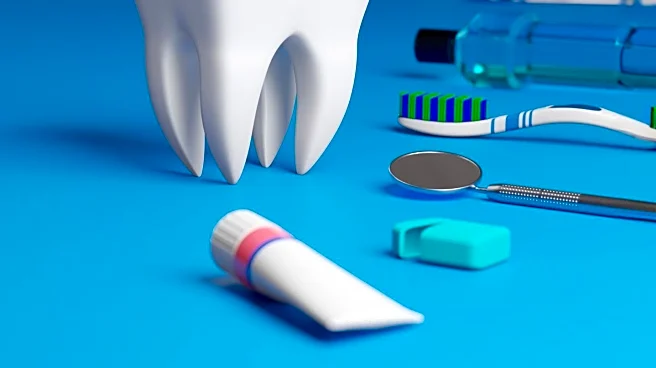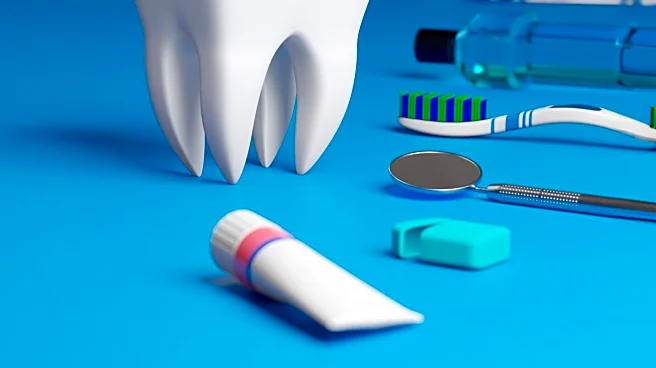Rapid Read • 7 min read
Modern dentistry heavily relies on plastic materials, from toothbrushes to dental fillings and orthodontic devices. Concerns are growing about the microplastics that may leach from these materials into the human body. Adith Venugopal, an orthodontist, has raised ethical concerns about the potential health impacts of microplastics from dental products. While plastic is essential for many dental treatments, such as cavity fillings, the long-term effects of microplastics on health remain unclear. Research is ongoing to understand the extent of microplastic exposure from dental devices and its implications.
AD
The widespread use of plastics in dentistry highlights a potential health risk that is not yet fully understood. Microplastics have been linked to hormone disruption and other health issues, raising concerns about their presence in dental products. As dental treatments often involve prolonged exposure to plastic materials, understanding the risks is crucial for patient safety. The dental industry must balance the benefits of plastic use with potential health risks, prompting further research and innovation in alternative materials.
The American Association of Orthodontists is actively researching the impact of microplastics in dentistry and considering alternative materials. Patients are advised to monitor their dental devices for signs of wear and consider metal braces as an alternative to plastic aligners. Continued research is needed to assess the health impacts of microplastics and develop safer dental materials. The industry is encouraged to prioritize patient safety and explore innovative solutions to reduce microplastic exposure.
The ethical considerations of prescribing plastic dental devices are significant, as they may contribute to microplastic accumulation in the body. The dental industry must address these concerns by investing in research and developing materials that minimize health risks. Public awareness and education about microplastic exposure from dental products are essential to inform patient choices and promote safer practices.
AD
More Stories You Might Enjoy










